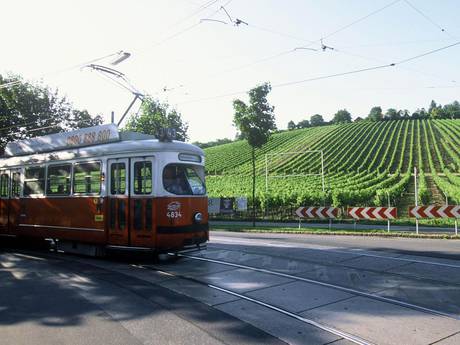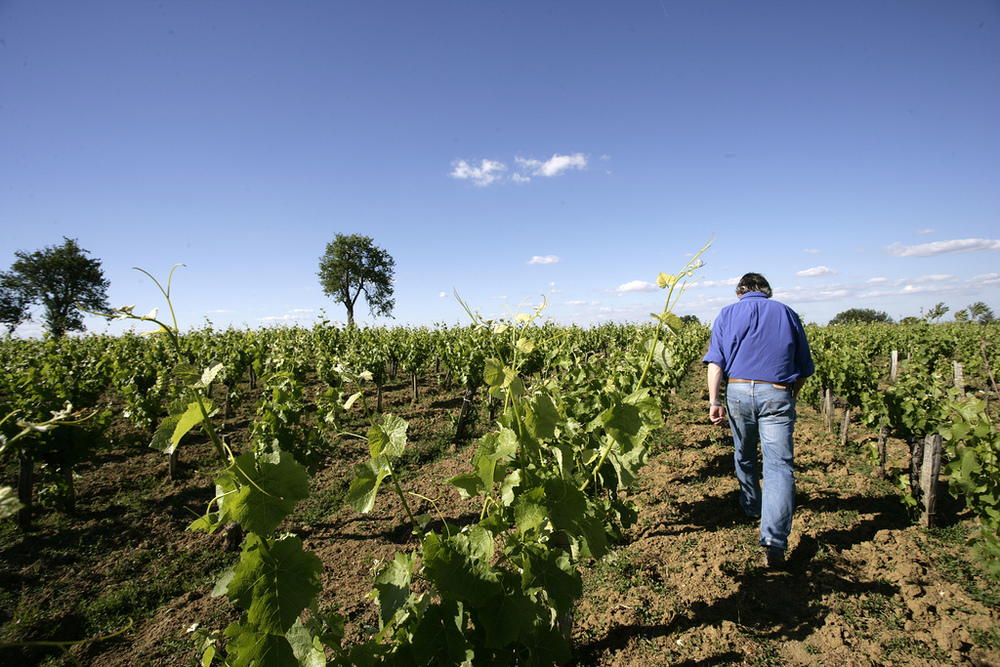Article written for Chambers Street Wines, view it here

There is nothing quite like the light, bracing, barely off-dry style of Riesling in which the Mosel particularly excels. In the 1890s and the first decade of the 20th Century, it was this unique character that grabbed the public's attention and affection, and Mosel Rieslings enjoyed a status not seen since. The current German labeling laws fail to properly account for this style, and some winemakers call it feinherb, some just add a village or vineyard name, and some label it as something else altogether. Regardless of labeling terms, somewhere between a sweeter Kabinett and an austere bone-dry Trocken, there is another dimension which is a specialty of the Mosel.
The changes brought by the 20th Century to German wine were myriad, but on the technological side the introduction of the sterile filter ushered in a new style of sweeter wines – before this, high levels of residual sugar were prone to re-fermenting in the bottle. Eventually these sweeter wine styles were codified by law in 1971 as the Prädikat system, which uses the ripeness categories of Kabinett, Spätlese, Auslese, etc. However, the less-sweet, latter-day style of the Mosel's heyday is re-emerging - and for good reason. The marriage of tangy, cool-climate acids with lower residual sugar levels is stimulating and refreshing, while alcohol levels around 10% make these wines supremely sessionable (i.e. suitable for a lengthy drinking session). Most of these wines are free of botrytis, which allows for more purity and expression of minerals and Mosel slate.
They are also famously versatile: from oysters to grilled sausages to all things spicy, none of the wines below will be out of place. Many have swooned for Florian Lauer's Barrel X for all the reasons above, but as we wait for the next shipment of 750s to arrive (we do have a few magnums left), why not explore a few others? When all these other producers can show off this classic style with their own unique panache and terroir, it's an invitation to start down a delicious, thirst-quenching path that leads to the historic soul of the Mosel. Jonathan Kemp
Falkenstein, Hofgut 2013 Saar Riesling Niedermenniger Herrenberg Spätlese Feinherb
- Always the best-selling wine in the Falkenstein lineup, and the one with the widest appeal. This comes from the deep-rooted Herrenberg vineyard, mostly gray slate with a few patches of red and blue slate. The wine has just barely enough sugar to take the edge off the tangy structure, but enough to add quite a bit of charm. Still lean, precise, clean, and mineral, but with a gorgeous finesse and energy that is undeniable. A true star of the Saar.
Julian Haart 2014 Mosel Riesling 1,000 L
- Bottled from a huge, 50 year-old barrel that holds 1,000 liters.This is bright, vivid, intensely refreshing Riesling that finishes with a dusting of minerals and crushed flowers. Chewy texture on the finish with just a slight hint of residual sugar that makes this sultry and deliciously drinkable. Taste why Julian Haart is getting so much attention in the world of German Riesling! From younger vines in the Piesporter Goldtröpchen.
Julian Haart 2014 Mosel Riesling 'Moselle'
- With a touch more ripeness than is found in Haart's '1,000L' bottling, this almost-dry feinherb has such lovely detail and texture to accompany the light sugar and electric backbone of acidity. A touch of orange and cream on the nose, this is superb, bright, structured, and elegant, a bottle to grab when finesse is called for. Grapes come from the Piesporter Goldtröpchen and Wintricher Ohligsberg vineyards and is done in a mixture of steel tank (60%) and traditional Mosel fuder (40%).
Knebel 2012 Mosel Von den Terrassen Riesling
- 'Von den Terrassen' is a blend of Knebel's four terraced parcels, some of the steepest in all of Germany. Matthias' wines are shaded differently than those of his mentor Gernot Kollmann's at Immich-Batterieberg, though they are made in a similar fashion, with fermentation beginning spontaneously and ending naturally, not being forced to be sweet or dry. Knebel's lineup has a darker tint, full of mineral depth and finesse. These are dangerously drinkable, soulful, and crowd-pleasing. Most people will not detect the residual sugar but they will detect the deliciousness.
Lauer, Peter 2014 Saar Riesling Barrel X 1.5 L
- Anybody's who's tasted this magic elixir will attest to its gulpable, thirst-quenching powers. An energizing beam of zappy refreshment is formed as the lime pith and white grapefruit acids perfectly bond with the pretty, subtle touch of sugar. It finishes nearly dry, with some chewy texture. A perennial favorite and an ambassador to America for this gorgeous, racy style of German glou-glou, it's perfect in this larger format.
Später-Veit 2014 Piesporter Riesling 1 L
- This slightly off-dry Riesling really leaps out of the glass with lively stone fruit and minerals. Vivacious acidity gives it lift and is matched with silky, ripe pear on the palate, with hint of texture on the finish. This is a standout value in the 1L bottle, and all comes from the gray slate of the Falkenberg parcel, just above the famous Piesporter Goldtröpchen vineyard. Spontaneously fermented in stainless steel.
Stein 2013 Mosel St. Aldegunder Himmelreich Ries Kabinett Feinherb
- Utterly inspiring! A delicious display of acid, with just enough sugar to bring out the stone fruit - subtle apricot, nectarine, and peach. Finishes with electricity and minerals. There is so much bracing energy and soulful majesty in this wine but it's hard to resist the temptation to empty the entire bottle in one glorious slug.
Steinmetz, Günther 2013 Mosel Riesling 1 Liter
- The 2013 Liter, due to the greater challenges of the vintage, was sourced from a mixture of Stefan's holdings. Yet the result is hardly a mixed bag: it is just as thrilling a deal as always. Zippy, cool, understated and chalky, with a touch of sweetness that is simply delicious in all its poise and elegance. Refreshing, breezy, endlessly versatile.
Weiser-Künstler 2014 Mosel Riesling Feinherb
- Neither fruity nor sweet, this is instead an exciting display of edgy, tantalizing acids and chalky minerals accompanied by subtle floral aromas, white grapefruit, and lemon. This is very bright, refreshing, energizing wine that carries the distinctive purity we've come to adore from Weiser-Künstler. The grapes for this bottling come mostly from the south-facing Wolfer Sonnenlay vineyard, in a side valley of the Mosel. At 9.5% alcohol, this is an unflinching example of the cleansing, remunerative properties of light, tangy Mosel Riesling.











